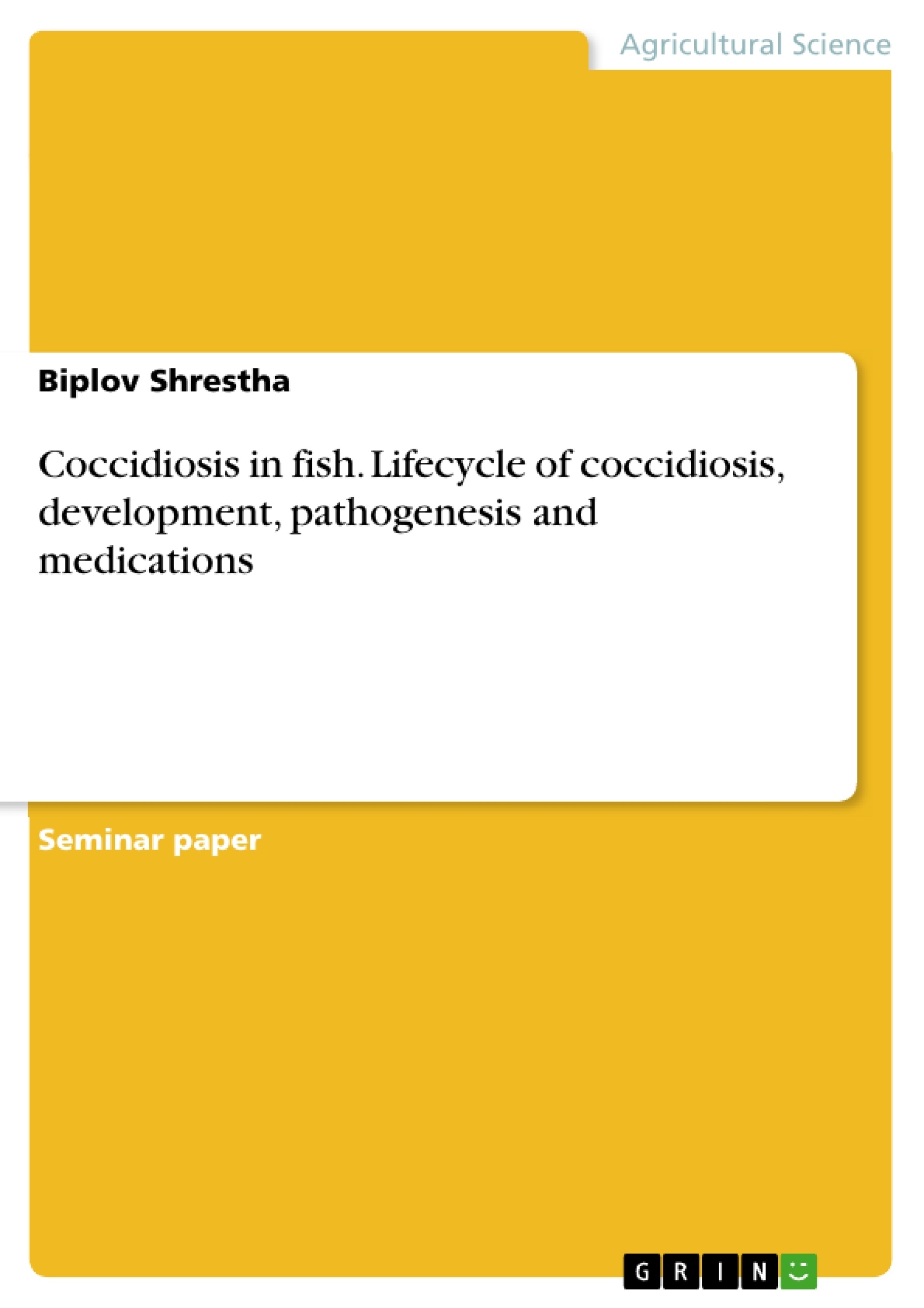The present review has summarized the status of fish coccidia and has provided an insight into the life cycle, taxonomy, transmission, pathogenesis, prevention, and treatment. Coccidiosis is a disease that is caused by protozoan parasites of the apicomplexan genus Eimeria and is transmitted via ingestion of infective oocysts. It affects many vertebrates and invertebrates causing mortality, poor performance of animals, and reduce productivity. This disease mostly affects the poultry sector, but its different species are also present in fish and cause economic loss. Coccidiosis in fish has been studied extensively, as it is regarded as chronic and its impact is easily overlooked. There are at least 18 genera under 3 families of order Eucoccidiorida that are responsible to cause some form of coccidiosis in different animals including mammals, avians as well as piscine. About 250 species of coccidiosis are known to occur in fish and among them, Eimeria and Goussia spp are the most prevalent ones. Taxonomic classification has been a difficult task and is determined on the basis of morphological features of oocysts. Coccidiosis generally has 3 stages in its lifecycle, with some variation according to species. About 30% of coccidia develops extraintestinal, and most of the fish coccidia are kept under an Eimeria genus. Transmission occurs via direct as well as by indirect method, but direct method id more common and simple. Coccidiosis can cause mild to serve damage and pathogenesis can differ with species. For prevention and control, different anticoccidial drugs are used. However, sanitation is a prime factor to reduce the risk of oocyst's introduction in animals.
Inhaltsverzeichnis (Table of Contents)
- Introduction.
- Taxonomy..
- Coccidiosis in fish
- Life cycle………….
- Transmission
- Pathogenesis.......
- Prevention and treatment..
- Conclusion....
- References..
Zielsetzung und Themenschwerpunkte (Objectives and Key Themes)
This review provides a comprehensive overview of coccidiosis in fish, a disease caused by protozoan parasites of the genus Eimeria. The paper examines the life cycle, taxonomy, transmission, pathogenesis, prevention, and treatment of coccidiosis in fish, highlighting the importance of this disease in both wild and cultured fish populations.
- The impact of coccidiosis on fish health and productivity.
- The life cycle and taxonomy of fish coccidia.
- Transmission routes and factors influencing the spread of coccidiosis in fish populations.
- The pathogenesis of coccidiosis and its effects on fish tissues and organs.
- Prevention and treatment strategies for controlling coccidiosis in fish.
Zusammenfassung der Kapitel (Chapter Summaries)
The review begins by introducing coccidiosis, its causative agents, and its global impact on different animal species, with a focus on its economic significance in the poultry sector. It further explains the prevalence of coccidiosis in fish from various aquatic environments and emphasizes the importance of understanding this disease in the context of expanding aquaculture practices.
The paper then delves into the taxonomy of fish coccidia, highlighting the complex life cycle of these parasites, which involves both sexual and asexual stages. The review further explores the transmission routes, emphasizing the importance of direct transmission through ingestion of infective oocysts. Finally, the paper discusses the pathogenesis of coccidiosis, outlining its impact on fish tissues and organs, and concludes by examining various prevention and treatment strategies, including the use of anticoccidial drugs and sanitation measures.
Schlüsselwörter (Keywords)
The primary keywords and focus topics include coccidiosis, fish, Eimeria, protozoan parasites, life cycle, taxonomy, transmission, pathogenesis, prevention, treatment, aquaculture, anticoccidial drugs, sanitation.
- Quote paper
- Biplov Shrestha (Author), 2022, Coccidiosis in fish. Lifecycle of coccidiosis, development, pathogenesis and medications, Munich, GRIN Verlag, https://www.grin.com/document/1182599



